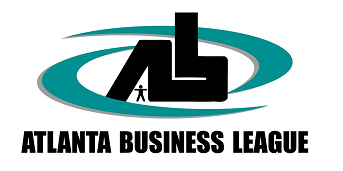Mastering the Art of Working Capital – Tools and Techniques for Business Success
Working capital represents a critical factor determining the financial health and growth capacity for any business. While profitable and generating sales, many businesses still face avoidable cash flow struggles from suboptimal working capital management. By mastering techniques to optimize inventories, receivables, payables and more, companies can unlock liquidity trapped on their balance sheets.
Working capital reflects the operating liquidity available to fund day-to-day expenses and growth opportunities. Honing working capital strategies improves cash flow, strengthens resilience to disruptions, and minimizes unnecessary borrowing. Optimal working capital efficiency powers competitive advantage and innovation.

Understanding Cash Conversion Cycles
Working capital management revolves heavily around optimizing the cash conversion cycle – the time between paying suppliers for materials and collecting payment from customers. Minimizing this cycle boosts liquidity available for growth.
Strategies that improve timing and delays around inventory, payables and receivables management yield outsized benefits. For example, tightening collection times for outstanding invoices quickly improves cash availability. Extending payables eases short-term strains.
Smooth cash conversion cycles transform balance sheets from paper value into usable working capital that empowers management to pursue investments confidently.
Inventory Optimization Strategies
Excess inventory needlessly consumes working capital that could be deployed elsewhere. Just-in-time inventory management and drop shipping help reduce stockpiles to boost liquidity.
- Just-in-time (JIT) leverages predictive data, strategic suppliers and lean processes to acquire materials as needed for fulfilling orders rather than overstocking. This minimizes tying up capital in inventory.
- Drop shipping enables orders to be fulfilled directly by suppliers rather than holding bulk inventory that may become obsolete. This slashes costs related to warehousing, logistics and waste.
Optimized inventory flows quicker through the conversion cycle. Cash stranded in unused stock piles gets freed up for growth initiatives and pivots.
Leveraging Accounts Receivable
The gap between invoicing customers and incoming payments represents a prime opportunity for working capital optimization. Accelerating the receivables process injects critical cash flow.
Providing incentives like payment term discounts encourages customers to pay invoices faster. Even small discounts of 2-3% dramatically improve cash inflow timing while still boosting net returns.
According to the folk at Thales Financial in Utah, debt factoring is a process that allows businesses to essentially sell their outstanding invoices to instantly access working capital locked inside receivables. This monetizes invoices to generate cash flow now rather than waiting extended periods.
Managing Accounts Payable
Paying suppliers as slowly as reasonably possible improves cash flow available for other priorities. This starts by negotiating optimal payment schedules with vendors.
Building strategic supplier relationships focused on mutual benefit enables securing longer payment runs of 60, 75 or 90 days. Vendor financing also eases working capital strains.
Automating payables streamlines processing of invoices and outgoing payments. This prevents oversights and delays while optimizing terms efficiency.
Financing Strategies
The optimal working capital mix incorporates a blend of financing strategies tailored to business lifecycle needs. Favorable payment terms ease short-term liquidity. Factoring provides flexible capital.
Later stage businesses tap loans or lines of credit to fuel growth while balancing long-term debt obligations. Younger firms utilize equity financing from investors with expected return timelines. Debt factoring injects working capital without diluting ownership.
Each funding avenue carries tradeoffs between control, cost of capital and flexibility. The ideal financing portfolio provides diversity and resilience.
Conclusion
Working capital optimization is mastered over time through focus on improving cash conversion cycles, strategic cost management and selecting adaptable financing. The reward is ample liquidity to confidently power business goals.
For companies that develop proficiency managing inventories, receivables, payables and financing, working capital becomes a source of strength and competitive advantage rather than a constant bottleneck. Unlocking this potential is instrumental for success.



